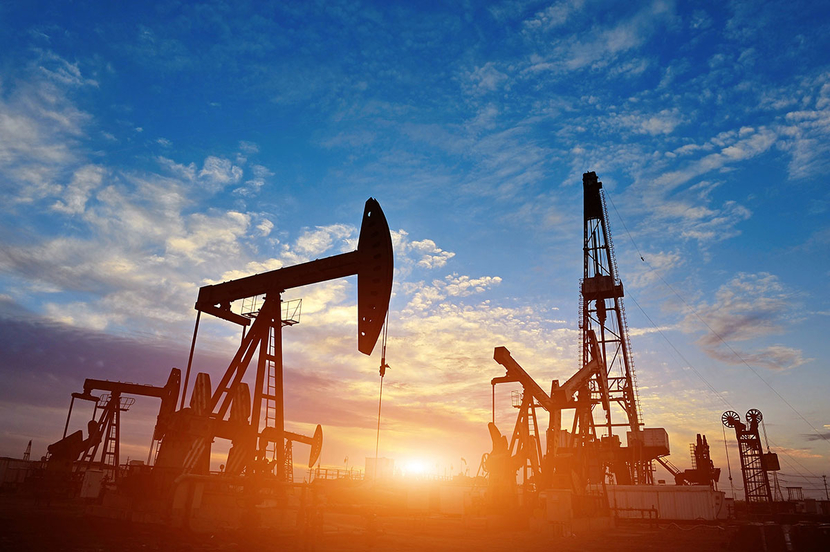

Muscat: Oman's average daily production of oil during 2019 amounted to 971,000 barrels per day against 978,000 barrels per day in 2018, a reduction of 0.7 percent.
The Sultanate maintained its level of oil production in compliance with the agreement to curb output among the OPEC and non-OPEC producers in order to stabilize the international oil supply and demand, said the Ministry of Oil and Gas in its annual report.
By the end of 2019, the total reserves of crude oil and condensates in the Sultanate amounted to about 4842.71 million barrels, up by 1.1 percent in comparison with 2018. Petroleum Development Oman contributes about 67 percent of the total reserves of the year.
The total exports of oil and condensates during 2019 amounted to 310 million barrels. The people’s Republic
of China topped the list of countries importing crude oil from Oman, with 78 percent, followed by Japan with 8 percent. The rest of the countries represented 14 percent of the total exports of crude oil and condensates in 2019
In 2019, the average price of Omani crude oil reached USD 63.58 per barrel, decreasing by 9.2 percent against
2018. Omani crude oil prices averaged at a minimum of USD 57.33 per barrel in February and a maximum
of USD 71.15 per barrel in June.
Five new oil agreements have been signed with a number of local and international companies. The value of investments in the first phase is about $115 million. The crude oil and condensate exports grew by 7 percent in 2019 compared to 2018 (310 million barrels in 2019 compared to 289 million barrels in 2018). China topped the list of importers of Omani oil in 2019 with a 78 percent.
The number of employees working in oil and gas companies operating in Oman during 2019 reached
19,012, of which 15,982 were Omanis, and 3,030 were expatriates. By the end of 2019, Omanisation in
the upstream and downstream businesses of the oil & gas sector reached 84 percent, an increase of 7 percent of
Omani workforce against 2018. These figures do not include the workers in the contracting and services
companies operating in the oil & gas sector.
The companies operating in exploration and production carried out a number of seismic surveys in the concession areas, which covered more than 19,000 KM2. 94 exploration and appraisal wells have been drilled and tested in 2019, adding new oil and gas reserves hence maintaining the current production levels.
As for the reserve indicators, it should be noted that the Sultanate’s expected crude oil and condensate reserves as of the end of 2019 stood at about 4842.71 million barrels. The natural gas reserves as of the end of 2019 stood at 23.8 trillion cubic feet.
Total petroleum products output of Oman Oil Refineries and Petroleum Industries Company (ORPIC)
reached about 112 million barrels. The contribution of Mina Al Fahal Refinery was 35 million barrels, and
Sohar Refinery contribution was 77 million barrels. The production of gas oil (diesel) was about 22% of
the total production of the two refineries of ORPIC.
The total sales of petroleum products during 2019 is estimated to be 27 million barrels, of which 2 million barrels were sold by Mina Al Fahal Refinery, and 25 million barrels were sold by Sohar Refinery. ORPIC sales of naphtha represent 41% of the total domestic sales of petroleum products in 2019.
The total quantities of petroleum products exported during 2019 by Oman Oil Refineries & Petroleum. Industries Company through Sohar Refinery is estimated to be 33 million barrels. Exports of gas oil (diesel) represented 27 percent of the total quantities of petroleum products exported in 2019.
The total quantities of petroleum products exported during 2019 by Oman Oil Refineries & Petroleum Industries Company through Sohar Refinery is estimated to be 33 million barrels. Exports of gas oil (diesel) represented 27 percent of the total quantities of petroleum products exported in 2019.
The total reserves of natural gas in the Sultanate at the end of 2019 is estimated to be 23.8 trillion cubic feet, 53.7 percent of which is the estimated reserve of PDO, followed by BP (Khazzan and Ghazeer) with 41 percent, and 5.3 percent of other companies.
The Sultanate’s average production of natural gas during 2019 amounted to 122.2 million cubic metres per day, 19 percent of which was associated with gas at an average of 22.8 million cubic metres per day. Nonassociated gas constituted 81% of the total production at an average of 99.4 million cubic metres per day. In addition, natural gas was imported through Dolphin Energy Company at an average of 5.3 Milli on cubic metres per day.
The total consumption of natural gas during 2019 reached 46,554 million cubic metres. Oman LNG and Qalhat LNG projects ranked highest in terms of natural gas consumption, accounting for about 16,129 million cubic metres, or 35% of the total consumption in 2019. This was followed by local industrial projects, with 27% consumption, 22 percent for field operations and other uses, and 16 percent for power and desalination plants. Consumption at industrial areas constituted only 1 percent of the total consumption of natural gas.
Total exports of LNG during 2019 amounted to 10.6 million metric tonnes in 165 shipments. The export of gas condensates was 0.282 million metric tonnes in 43 shipments. At the end of 2019, Oman LNG represented 71 percent of the total natural gas exports, while Qalhat LNG accounted for about 29 percent of the total.
The total production of LPG in 2019 reached 611,000 metric tonnes. Quantities produced by Oman Oil Refineries and Petroleum Industries Company (Mina Al Fahal and Sohar) constituted 506,000 metric tonnes, i.e. 83 percent of the total LPG production, followed by 17 percent for the rest of the companies.

Oman Observer is now on the WhatsApp channel. Click here



